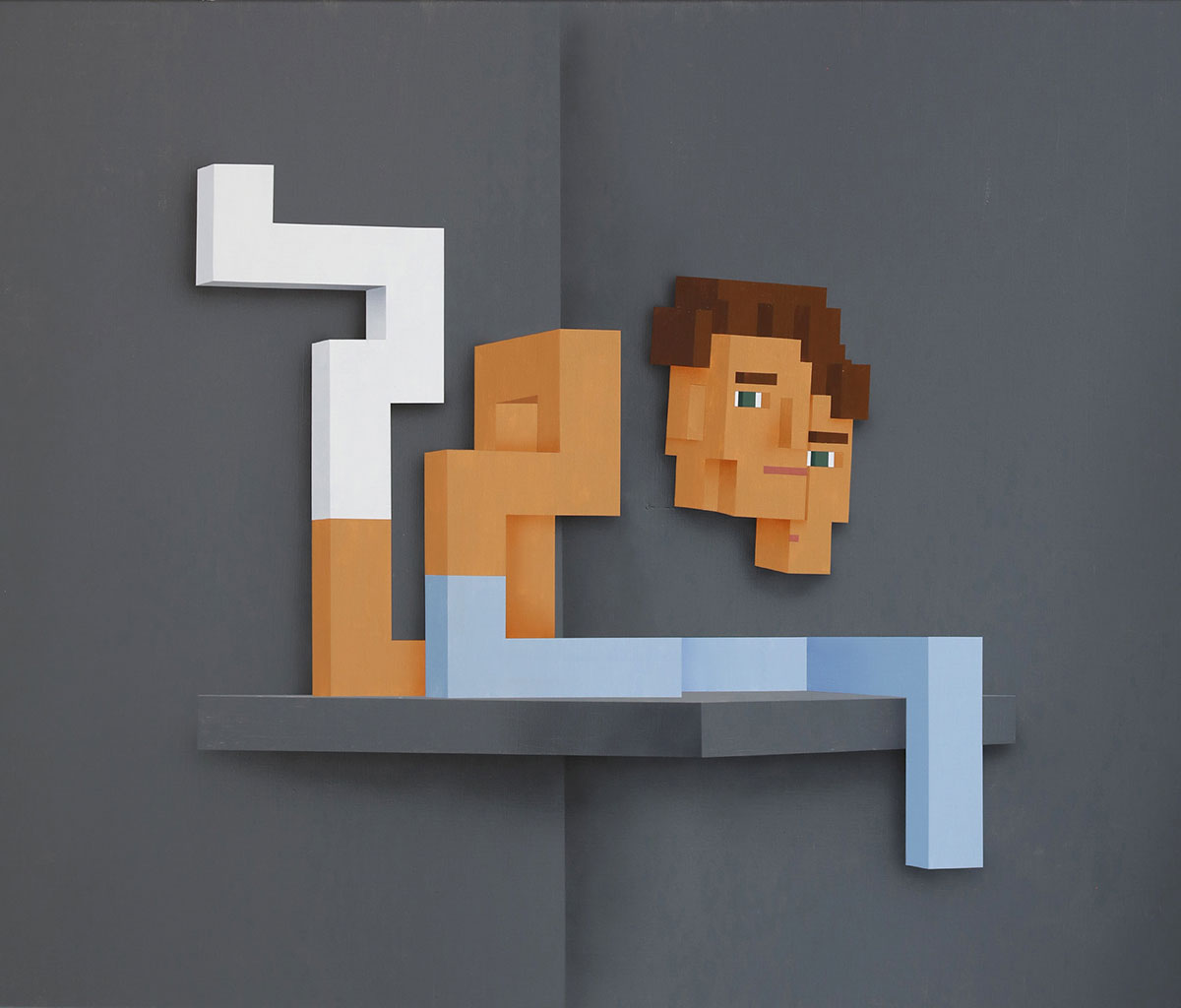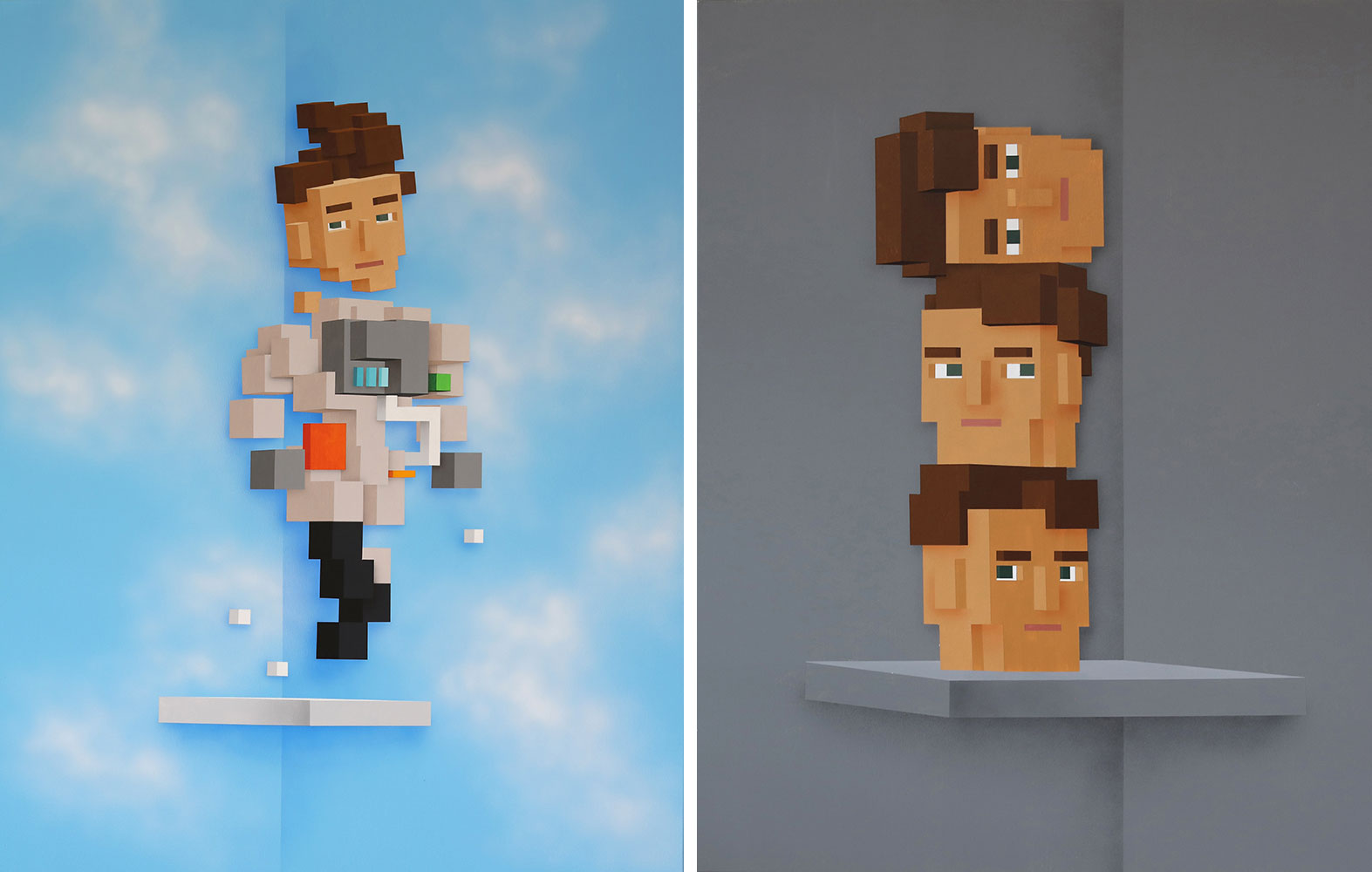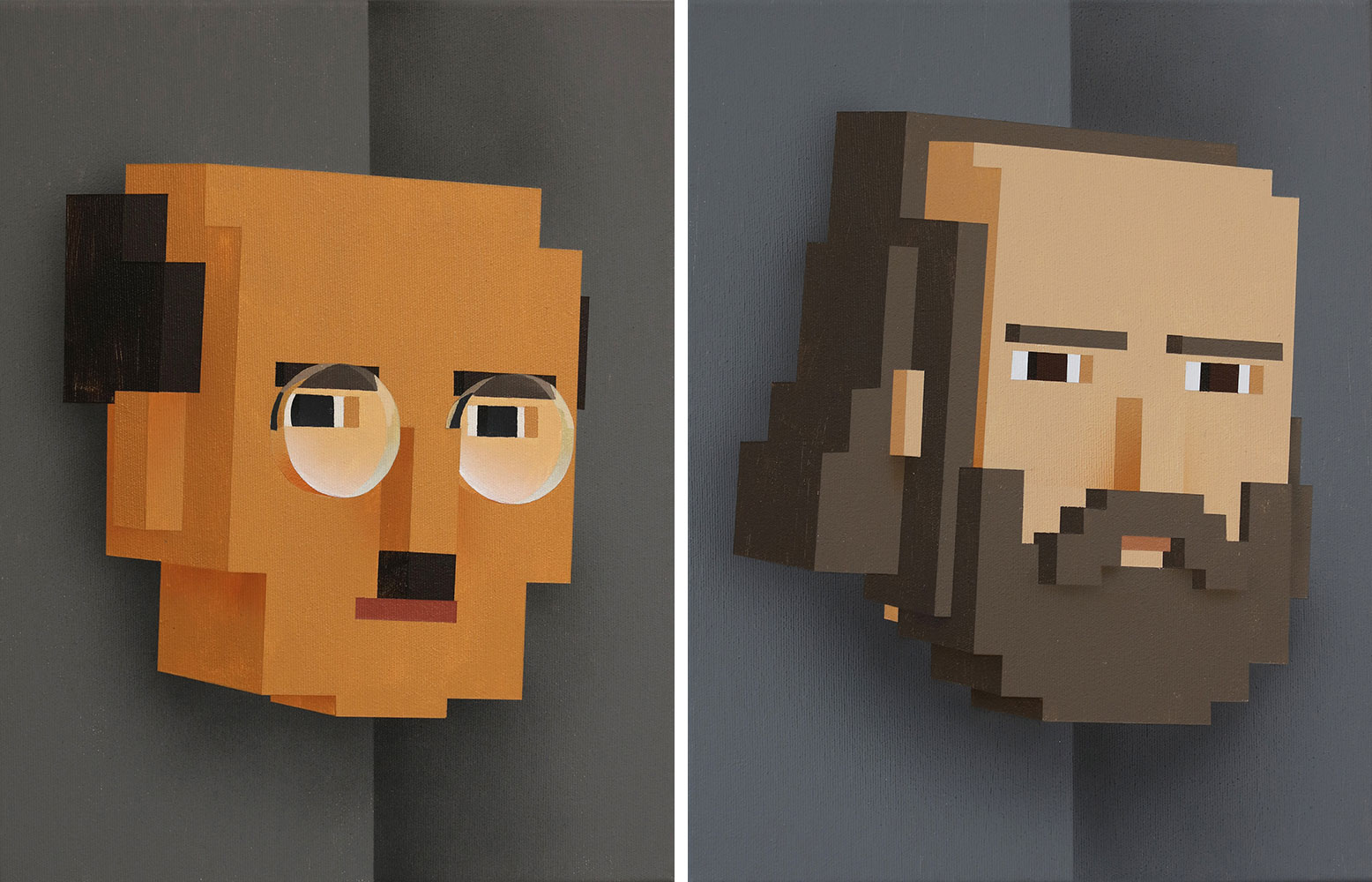PRESENTATION: Sepand Danesh-Fear of Collapse
 Sepand Danesh’s approach develops tools highlighting the perpetual movement of thought, its paradoxes, its connections and the richness of its variability. He develops precise protocols that can be viewed as experiments produced by the human brain. Amongst these protocols, drawing allows him to fragment ideas through a grid by sampling each reflection into a sketch. Juxtaposed with other similar thoughts, it becomes a codex or an eclectic set of creative moments. Being at the source of all my projects, this cognitive exercise functions as a notebook.
Sepand Danesh’s approach develops tools highlighting the perpetual movement of thought, its paradoxes, its connections and the richness of its variability. He develops precise protocols that can be viewed as experiments produced by the human brain. Amongst these protocols, drawing allows him to fragment ideas through a grid by sampling each reflection into a sketch. Juxtaposed with other similar thoughts, it becomes a codex or an eclectic set of creative moments. Being at the source of all my projects, this cognitive exercise functions as a notebook.
By Dimitris Lempesis
Photo: Praz-Delavallade Gallery Archive
In his practice, Sepand Danesh uses drawing, painting and trompe-l’oeil techniques to provoke questions of the human condition. Each of the works admits the evidence of a solitude governed by the own history of the artist, whose family fled Iran after years of war, and of a new French culture whose language he had to learn. through the books. In his paintings, the corner becomes the main subject: traditional image of the punishment of the child, it is here a place of meditation, imposed or not. A few carefully chosen iconographic elements nourish these verticalities and thus offer a different interpretation each time. Danesh references his personal experiences and memories, and relates them to the grander memory of Human history to create short and unique narratives. In his solo exhibition “Fear of Collapse”, each of Danesh’s paintings contain a character composed from cube-like shapes which he places in a corner, without a floor or a ceiling, to bring awareness to the condition of being trapped and wanting to escape. Escaping has been an obsession of Danesh’s. To succeed in this, he draws countless numbers of small fragments of his life arranged with rigor in endless grids. Danesh explains, “Every time I feel trapped, images flicker through my head with high frequency. Those images assemble into a fast-paced inner movie that I know by heart. My years in Tehran, my parents, my house, the streets, the neighbors, the extremely violent elementary school of the post-war period I attended and my immigration from Tehran to Paris.” Danesh’s images are captured in his drawings during glimpses of time which creates an archive of ideas that then need a place to be stored. A place which encompassed both the feeling of being trapped and finding a way to escape. When Danesh was a child, the ability to record and use personal information on the web did not yet exist. Key moments were recorded by analog means and eventually became personal belongings. Today, every aspect of our lives is collected, saved, and analyzed to create a shadow of our personal details and activities – geolocalisation, heartbeat tracking, cookies, dataveillance of points of interest, expenses – it is now known that the gathering of all that information creates a digital twin of each of us. The creation of this digital-twin came as a new aspect of identity and as a result pushes us to create new ways to escape. This dual identity makes accessible other aspects of human consciousness, still unexplored, which will impact, whether we like it or not, our physically existing identity. Painting and trompe-l’oeil techniques lead Sepand Danesh to design heuristic spaces that aim to provoke the viewer. His canvases are always composed of a corner without floor or ceiling. Inside this exploration space, he places objects with omniscient appearances, extracted from his personal memory and from a wider memory taken in his historical and artistic environment. The corner encloses and prevents the momentum of the body in its progression and movement, forcing the spirit to escape through imagination and creativity. His paintings thus offer the viewer a cognitive dialectic of prevention and escape. He uses the corner as a metaphor for confinement in his body, in languages, in countries, on earth, and that goes without saying, in the human condition. Alternatively, Danesh creates sequences of variations in volume, stemming from the same fragment – a cube or a pixel in volume, which it can also be called a ‘voxel’. Assemblages or combinations invented this way produce postures, inducing a lingering desire for expression, to the point that one would be deceived by the illusion of their movement. An illusion accentuated by the interplay of shadows and painted lights, giving a digital aspect to sculptures and getting spectators off the beaten track, inviting them to interact with their environment. Academic research helps him to update his creative process and find new lines of study. Observing the evolution of our thinking systems included the following past initiatives: A research project on urban grids in post-modern cities (funded by the CNAP from 2017 to 2019 as part of a research and creation support program). An initiation of a research program (Hubtopia) gathering artists and researchers around the problematic of the Hub. An implementation of his drawing protocol as part of a connected pen project in partnership with researchers and philosophers in cognitive science and network science. From his first drawings to his current projects in cognitive science, he strive to highlight the beauty of human thought.
Photo: Sepand Danesh, Collapse, 2022, acrylic on canvas, 51 1/8 x 63 in 130 x 160 cm, © Sepand Danesh, Courtesy the artist and Praz-Delavallade Gallery
Info: Praz-Delavallade Gallery, 6150 Wilshire Blvd, Los Angeles, CA, USA, Duration: 6/8-10/9/2022, Days & Hours: Tue-Sat 11:00-18:00, www.praz-delavallade.com/

Right: Sepand Danesh, The Denial, 2022 acrylic on canvas 51 1/8 x 39 3/8 in, 130 x 100 cm, © Sepand Danesh, Courtesy the artist and Praz-Delavallade Gallery

Right: Sepand Danesh, Warrior and Troubadour, 2022 acrylic on canvas, 63 x 51 1/8 in, 160 x 130 cm, © Sepand Danesh, Courtesy the artist and Praz-Delavallade Gallery

Right: Sepand Danesh, Paul Cezanne, 2022 acrylic on canvas 17 3/4 x 13 3/4 in, 45 x 35 cm, © Sepand Danesh, Courtesy the artist and Praz-Delavallade Gallery

Right: Sepand Danesh, Innocencia, 2022 acrylic on canvas 63 x 51 1/8 in, 160 x 130 cm, © Sepand Danesh, Courtesy the artist and Praz-Delavallade Gallery

Right: Sepand Danesh, The Kiss, 2022 acrylic on canvas 43 1/4 x 35 3/8 in, 110 x 90 cm, © Sepand Danesh, Courtesy the artist and Praz-Delavallade Gallery
